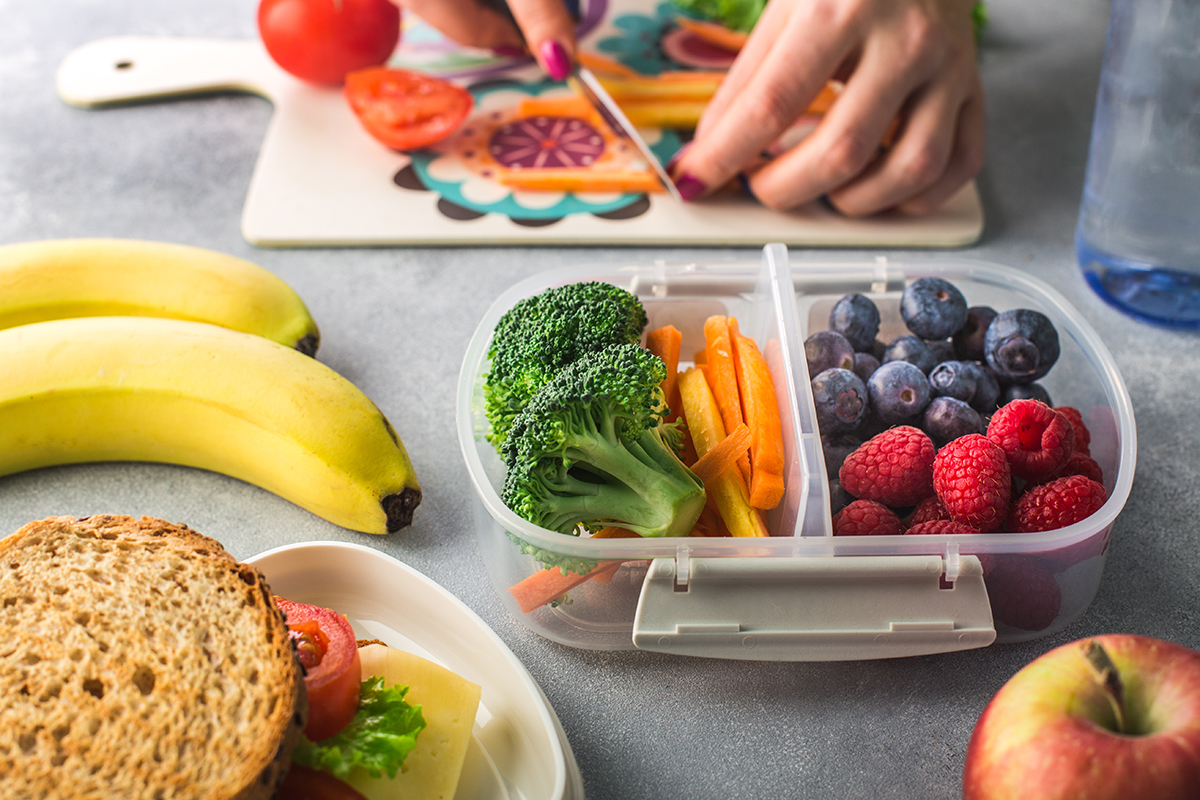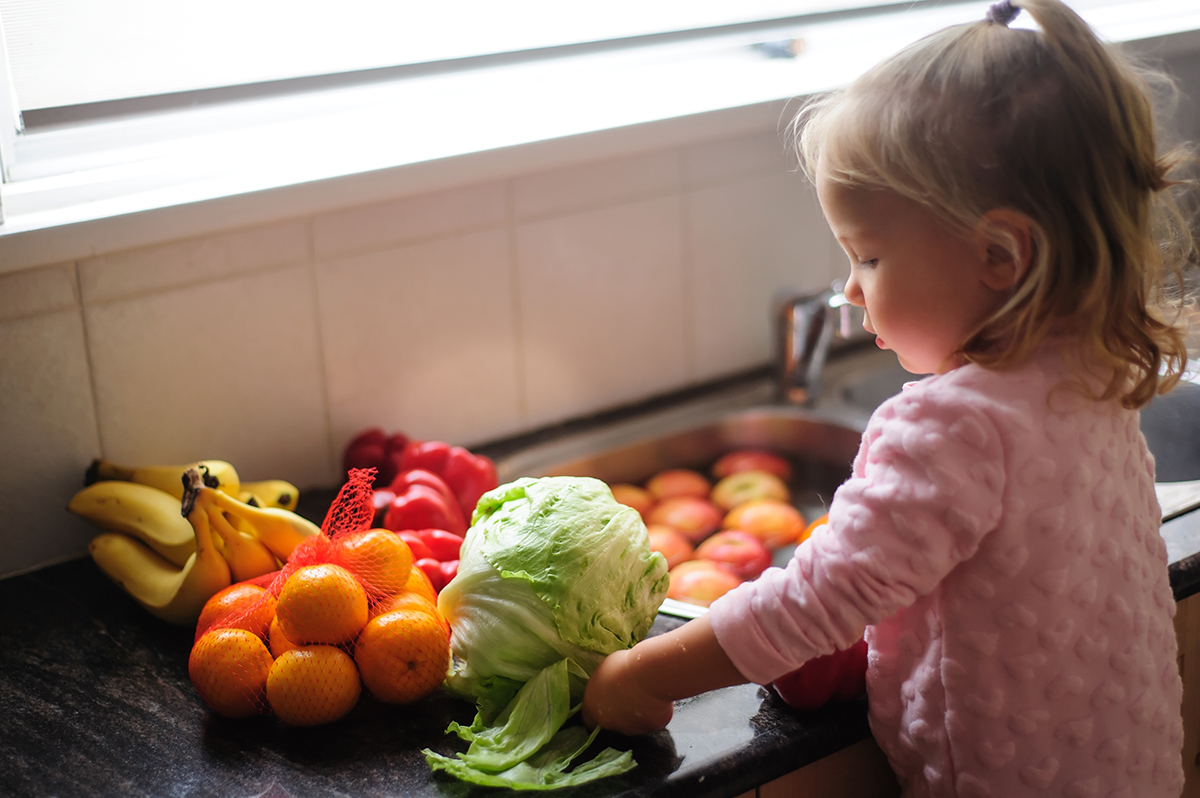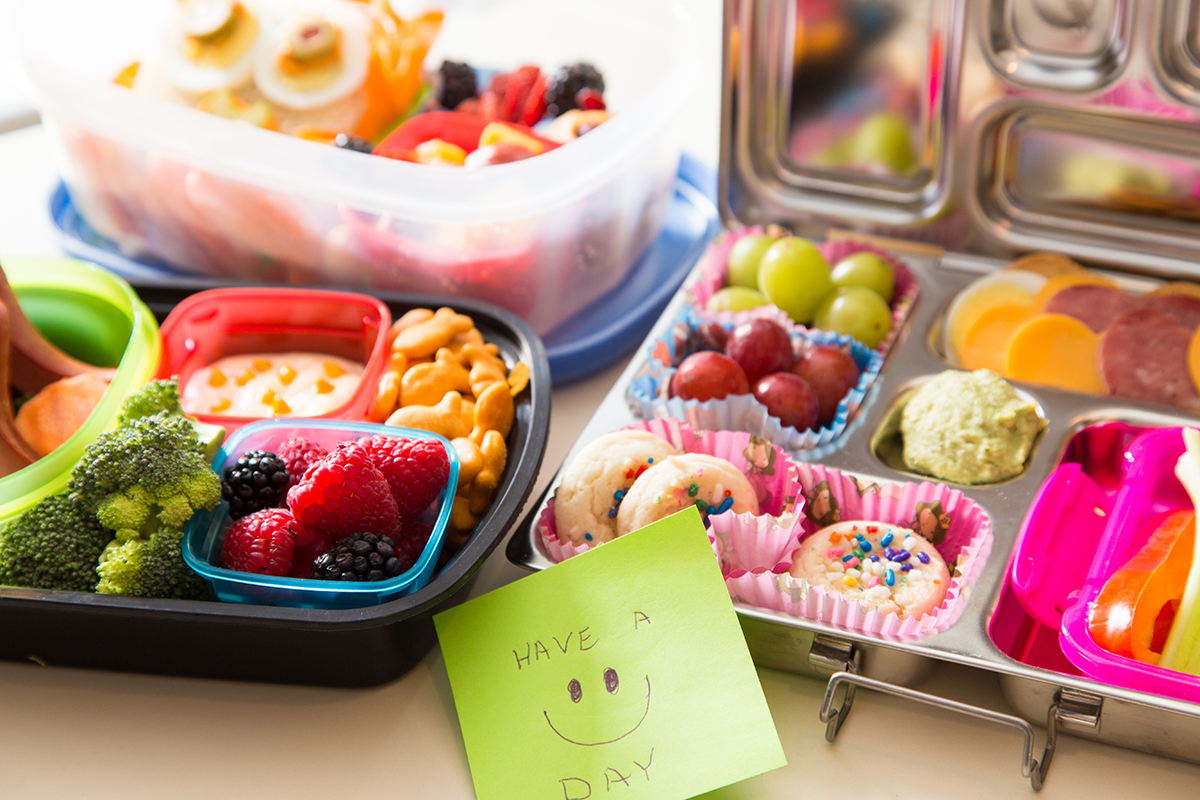
Whether you have a child in Mom’s Day Out only a couple of hours a week, a preschooler in daycare full-time, or a school-aged child needing packed lunches for elementary each day, the back to school season often comes with a bit of lunch packing anxiety for most parents.
To help combat the concern of “What to Pack” without running out of ideas, this post will lead you through five secrets to lunch packing success to try in the upcoming school year.
Five Secrets to Lunch Packing Success
Practice Safety First
Be sure you are familiar with the allergy policy at your child’s school. If they require you to avoid sending any peanut or nut-containing products, be sure you have eliminated these food products from your rotation. Instead, come up with a clear way to organize and/or identify which items are nut-free for school lunches so that you, your spouse, and/or your children can quickly and effortlessly include these items in school lunches.
Additionally, be mindful of choking hazards with small children. Even if nuts are allowed at your child’s school avoid or modify these and other foods that kids commonly choke on to help minimize the risk that your child will have a choking-related incident at school.
Create a Monthly Lunch Rotation
Some children and parents may prefer sending the same few staples in the lunch tote every day. Chances are that you and/or your child will burn out of making/eating these options though at some point in the school year. To avoid over-offering your child’s everyday favorites, start the school year with a list of known favorites as well as some kid- and mom-approved ideas to try.
Ideally, come up with 20 lunch combinations that you and your child can use to create a monthly template for packing lunches. This gives you lunch inspiration you know your child enjoys for five days a week and four weeks out of the month. Then, as children inevitably burnout on one or another option, you can swap that individual lunch out of the rotation and ask them to help you come up with a new alternative. This prevents your whole lunch-packing routine from getting derailed if/when your child suddenly rejects one of your only go-to lunch ideas.
Of note, this monthly template can include the same entree. Aim to offer a different main course each day of the week, as we don’t want kids to get in the habit of eating the same thing everyday. While it is okay to rotate through favorites (Mondays are nut butter sandwiches, Tuesdays are Build Your Own Lunchables…), we want to emphasize variety as much as possible to both prevent picky eating and to help boost your child’s overall nutrition. This also offers you an assortment of ideas and options to offer, especially should you ever be out of one choice item and need to offer something else! #momlife
Include Something From Each Food Group
Kids may want all the items they see their friends having, requesting the “best” ideas from each fellow classmate’s lunch box with little concept of what qualifies as a “balanced lunch.” Since it is your job as the parent to decide WHAT food to offer, aim to include something from all (or almost all) of the following food groups. Keep in mind your child’s food preferences, but also work to introduce many of the options below at home so that your child gradually gains new preferred foods. This will help to give you and your child more options when coming up with both variety and an assortment of lunchbox combinations for the above monthly meal template.
Fruits: apples, applesauce, bananas, blueberries, cantaloupe, dried fruit, grapes, honeydew, mango, papaya, pears, pineapple, pomegranate, raisins, satsumas, strawberries, watermelon
Veggies: peas, corn, carrots, broccoli, cauliflower, green beans, celery sticks, cucumber, bell peppers, leftover roasted vegetables, Brussels sprouts, potatoes, tomatoes, salad
Protein: edamame, hummus, beans, salmon/chicken/beef burgers, diced meat/poultry, tuna/chicken/egg salad, nut or seed butters, all-natural deli meat, smoked salmon, hard-boiled egg, leftovers
Dairy: sliced cheese, string cheese, cheese cubes, Babybel, yogurt
Grains: crackers, cereal, muffins, bagels, quesadilla, sandwiches, tortilla wraps, pizza bites, leftover rice/quinoa/pasta, leftover pancakes/waffles/French toast, popcorn (note choking risk), granola
Other: olives, energy bites, occasional treats

Get Your Child Involved
Even in small children, you can begin to solicit respectful input on their lunches. This is a great time to include them in lunch packing, especially at the beginning of the school year when you are getting into a new routine.
If the mornings before school are crazy (since they usually are!), ask for your child’s input after dinner while the kitchen is already messy and food is already out. Have them help pick an item from each food group to include in their lunchbox for the following day. This helps you to get their input AKA buy-in, which often equates to an increased likelihood it will get eaten. It also helps you to hear feedback from them on which items are working or not with their lunches as you work through creating that template of tried and true favorites. Sometimes insight as simple as they are unable to open a package, or that something was soggy by the time they got to eat it, or the ever-growing issue of them not having enough time to eat (and thus needing some items that may take less time to consume) is all the information you need to help the lunch you pack to actually make it into their tummies.
Plan and Pack Ahead
Experiment with what items you can make and/or prep ahead. Certain items freeze then thaw well for easy options to throw in the lunchbox. Others you can make over the weekend and include in lunchboxes (or as snacks, if needed) over the course of the week. Some shortcuts that can help make lunch packing easier may be as simple as doing prep steps like washing fruits and vegetables in advance and allowing them to air dry before they go in the lunch box. Such planning and advance prep allows you to quickly transfer these items to your child’s lunch with minimal to no effort come the time to actually pack their lunch.
Some items that are pre-packaged or less-perishable also may do fine being stored a few days in advance. One trick is to pack what items for each lunch that you can Monday-Wednesday (to include items like string cheese, crackers, etc) and then do Thursday and Fridays lunch boxes together at the same time later in the week. Even if you can’t pack everything (since not all foods stay fresh), this can often cut out a few steps back and forth with the pantry and free up some mental space on if you are promoting variety in what you offered during the week.
Additionally, organizing your pantry to include obvious lunch options is a great way to both get kids involved in making their selections as well as save you time from having to sort through which options are nut-free, convenient, etc. Sometimes something as simple as having healthy pre-packaged snacks or items that you have pre-portioned into snack bags in advance can be the difference between added chaos and unexpected ease as your try to get out the door in the morning.

In Summary
There is a lot of lunchbox inspiration out there, which you are welcome to pin to your heart’s content. I hope this article helped to provide realistic takeaways on how to approach, include, and/or pass over each of these ideas in a way that will be sustainable all school year. By applying the above advice, you and your children can also minimize the stress of lunch-packing and up the success of a lunch that goes to school AND gets enjoyed day after day.
Don’t forget to follow us on Twitter, Instagram, Pinterest, and Facebook!
 Contributor
Contributor
Ashley Smith is a pediatric dietitian and mom to two apprehensive eaters (ages 4 and 2). Her mission is to bring other families less meal time stress and more feeding success. Ashley does this each week through sharing simple approaches to meal planning and effective strategies for raising healthy eaters. Follow her on Instagram @veggiesandvirtue or her blog, www.veggiesandvirtue.com.
Original content © 2018 Super Simple. Not to be reprinted without express written permission. Terms of Service.

